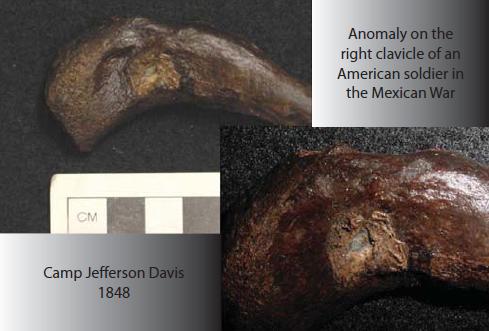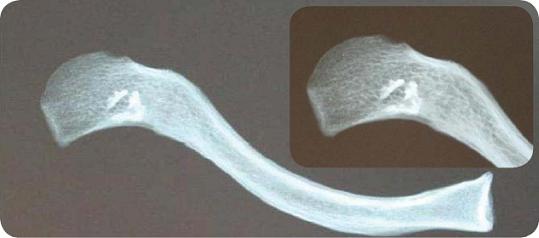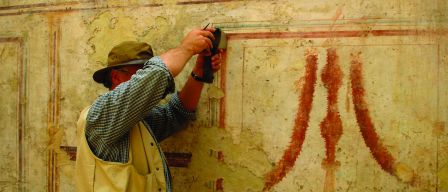Identification of a Bullet Fragment in a Mexican War (1846-1848) Soldier
INNOV-X Academic Grant Series
University of Southern Mississippi, Department of Anthropology & Sociology, Hattiesburg, MS USA
Focus Human Skeletal RemainsHandheld XRF proved a valuable tool during the skeletal analysis of remains that were found washing out on Greenwood Island near Pasacgoula, Mississippi. The graves were part of a section of the cemetery of Camp Jefferson Davis, a military internment camp and hospital utilized after the Mexican American War in 1848. According to historical records, some of those stationed at the installation were awaiting deployment to the newly established border with Mexico whereas others were injured soldiers that were unable to return home. | 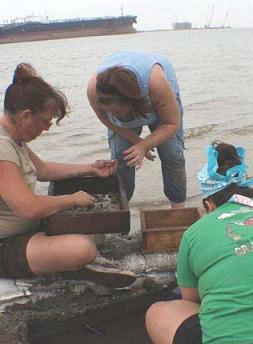 |
The existence of the cemetery was first brought to public attention in 1979 when local fishermen reported seeing human remains in two coffins eroding out on the beach. Local archaeologists found two graves; the bodies were exhumed, and the skeletons analyzed. These two individuals were eventually re-interred in 1989 with full military honors at the Biloxi National Cemetery.
Handheld XRF " … will allow testing on human bone in an arguably non-traditional setting. … findings may also prove relevant to forensic cases in which the skeletal material has undergone taphonomic changes. …" - Prof Marie Danforth
In the late spring of 2008 a report of bones by a fisherman once again brought archaeologists to the site. This time three new graves were excavated and the skeletal remains were examined. As before, all were determined to be adult males between 20 and 30 years of age, but during analysis a small anomaly on the right clavicle of one individual was observed.
Mystery Metal
It appeared to be some sort of accretion found on the bone rather than embedded in it. Curiosity sparked several hypotheses. The possibility that the anomaly was a bullet fragment was initially rejected on the relative unlikelihood that a projectile would strike the clavicle and remain there without causing damage to the bone itself. An alternative hypothesis was that the material could be a fragment of a pewter button which through the effect of taphonomic processes had became randomly lodged on a bone.
X-ray and Handheld XRF Analysis
An x-ray of the clavicle was taken, and showed the presence of a highly dense material. It of course gave no information about the chemical composition of the material, and thus, while being provocative, the analysis proved ultimately inclusive. The handheld XRF was then utilized and displayed remarkably high Pb levels (74643 ± 1511ppm) and moderate levels of Sn (4446 ± 119 ppm). A second area on the shaft was tested and displayed very low levels of Pb in comparison (98 ± 7 ppm) with practically no traces of Sn (<LOD ± 98 ppm).
X-rays indicate only one anomaly on the clavicle; it has a metallic appearance
Mystery Metal RevealedTesting was also conducted on two pewter buttons retrieved from within the coffin and yielded readings for Pb (294490 ± 12436 ppm) and Sn (190955 ± 8077 ppm) for the smaller one and Pb (338187± 15180ppm) and Sn (197868 ± 8898 ppm) for the larger. The ratios of Pb to Sn were compared. An average value of 1.62:1.00 Pb to Sn was found in the buttons. When compared to the ratio produced by the anomaly, 16.79:1.00 Pb to Sn, they conclusively suggest that the material could not be from a pewter button. The high ratio of Pb to Sn in the anomaly, however, is more consistent to what one would find in a bullet, thus supporting that the mystery metal was most likely a fragment from a gunshot. It is possible that the material could be from some sort of grave hardware, such as a hinge, but no such artifacts were recovered in any of the three graves nor were they reported to have been found with the two coffins from 1979. | 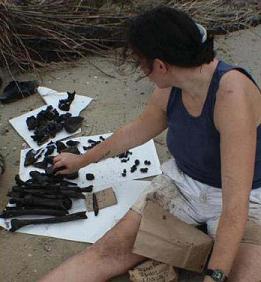 |
Plausible Alternative Cause of Soldier's DeathDespite the fact that these men were soldiers, a great many of them died not from wounds but from dysentery, disease, and dehydration - none of which tend to manifest on the skeleton. The discovery of a now possible contributory cause of death for this individual, gunshot trauma to the thoracic cavity, is of great excitement to both researchers on this particular project and those working on comparative sites as this discovery can now be added to the corpus of information physical anthropologists have on the demography of 19th century American soldiers. For additional information on this and related research work, please go to the University of Southern Mississippi Anthropology Program website for Professor Danforth's contact information at http://www.usm.edu/antsoc/danforth. php or for specific information on their Historic Archaeology Research at http://www.usm.edu/antsoc/antresearch. php. Innov-X Academic Grant Awarded to Principal Investigator, Dr. Marie Danforth. She and graduate students, Terri Ilgen and Lynn Funkhouser are at the University of Southern Mississippi, Hattiesburg, MS, USA. | 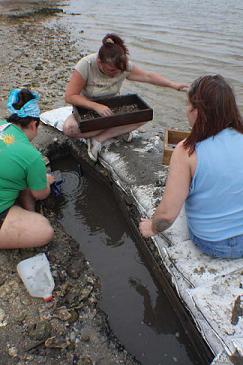 Graduate students from the Department of Anthropology and Sociology recover, sort and inventory the remains off of Greenwood Island near Pasacgoula, Mississippi. |
